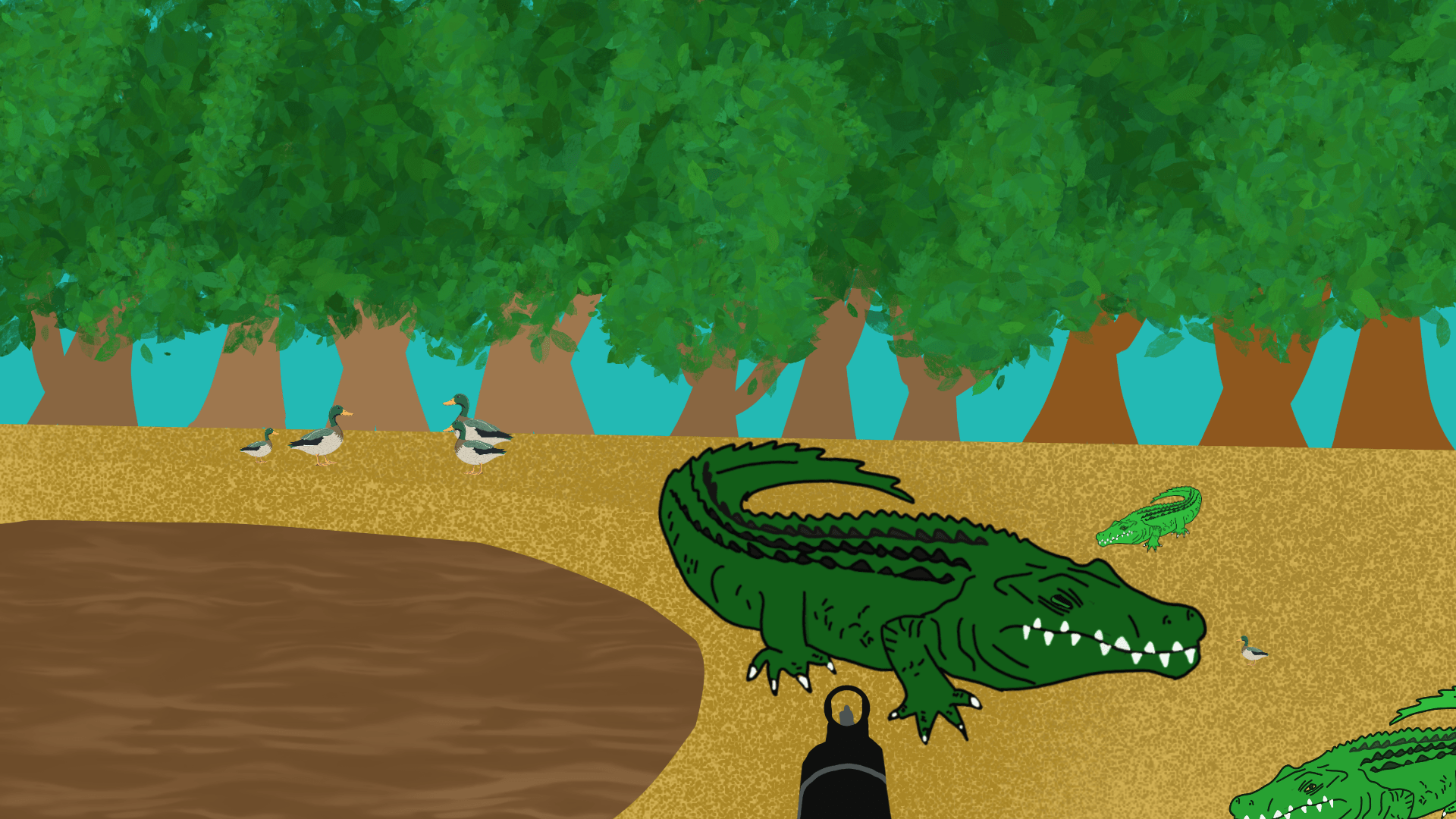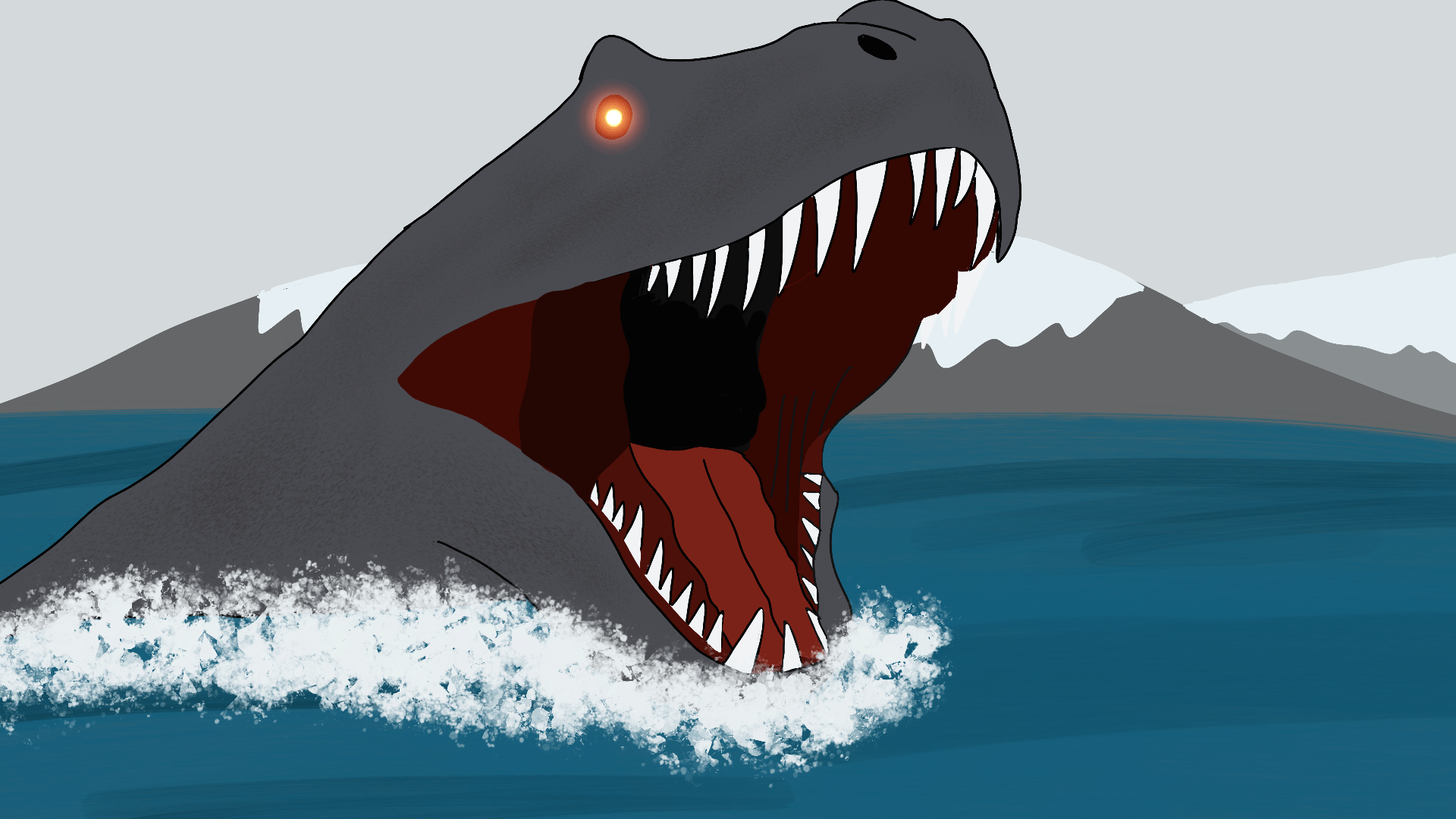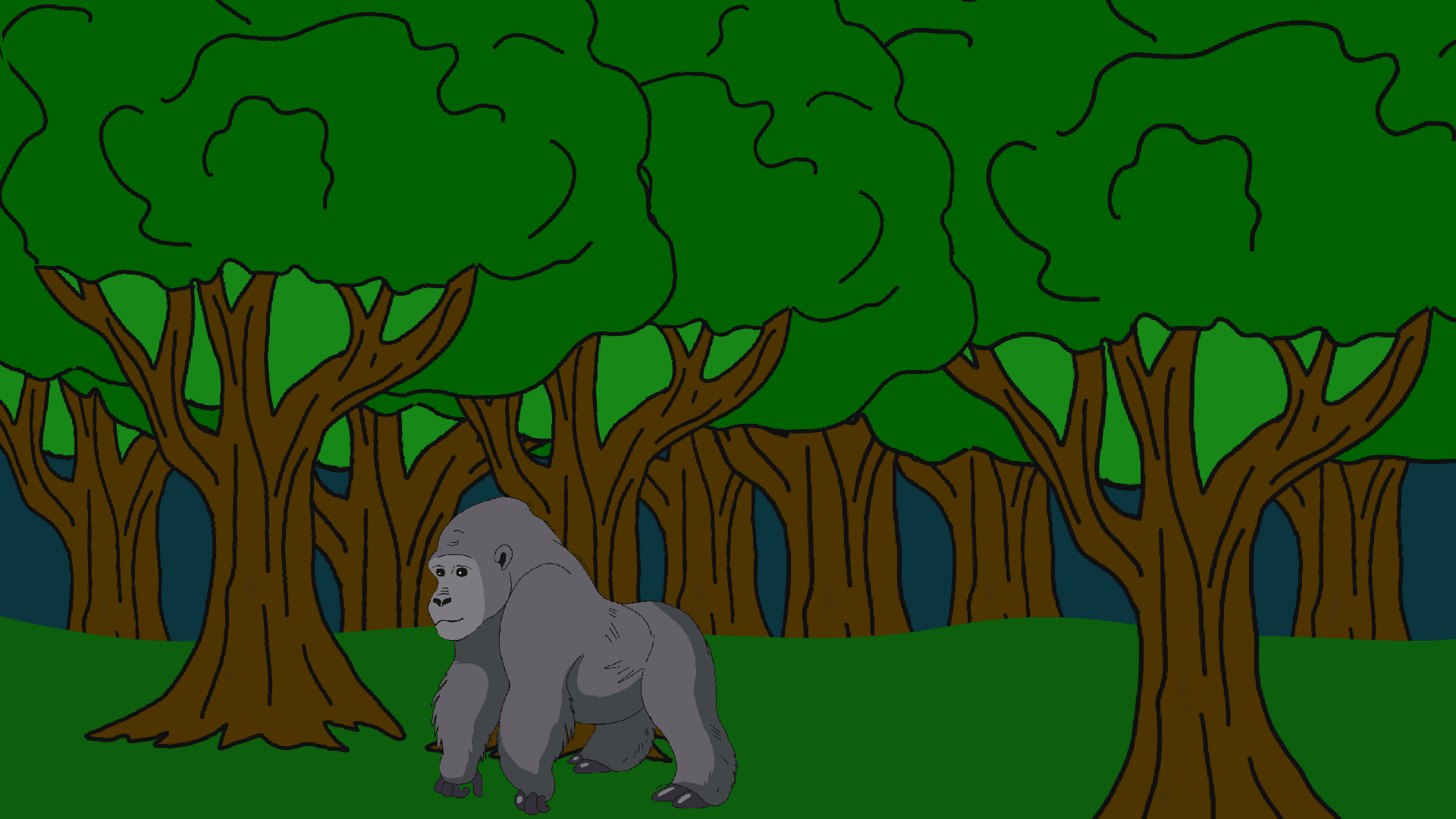Crocodiles are large semiaquatic reptiles that live throughout the world most often in tropical environments. This apex predator is carnivorous and known to attack a variety of animals and humans both in the water and on land. As a result, they are feared and respected around the world. While this maneater, is said to get around 20 feet, more specifically the Saltwater crocodile from Australia, there’s reports from around the world that these predators can be much bigger.
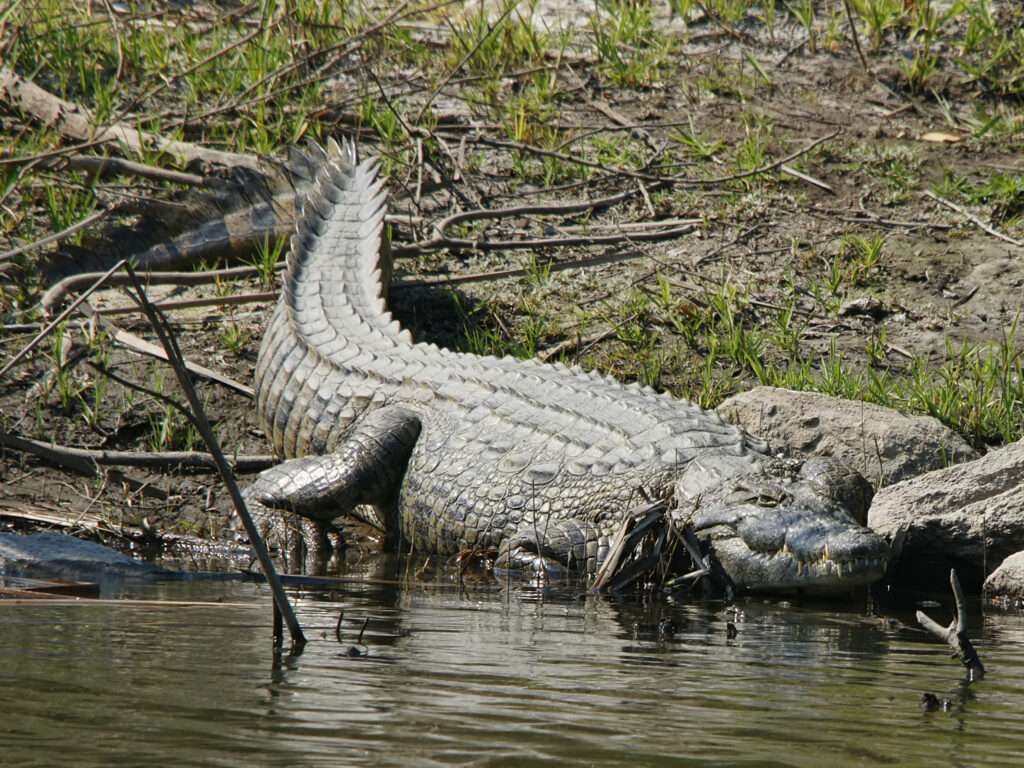
For example, adult male Nile crocodiles are said to reach between 16-17 feet, but it’s well known the infamous Gustave crocodile is at least 20 feet long and still growing. As terrifying as an encounter with Gustave would be, one group of natives in Central Africa in the Congo River region known as the Bobangi aboriginals have told of a massive crocodile for centuries. One at least twice the size of Gustave. It’s said this beast lurks somewhere in the massive remote Congo River Basin. The creature is known as Mahamba.
Mahamba Description
Mahamba is typically described as a 50-foot crocodile or perhaps a creature resembling a giant crocodile. The creature is said to be carnivorous and consume humans. Natives say the animal burrows and dig long tunnels around 1000 meters long. It is believed the animal lays eggs.
Giant Crocodiles in Earth’s History
It is important to point out that massive crocodiles have existed in the planet’s history. Aegisuchus is said to probably have been the biggest ever, growing anywhere between 50 and 70 feet. This massive creature’s size was estimated from a skull fragment, so it’s possible it’s even bigger. It’s still a matter of debate today as some believe Sarcosuchus or purrosuchus, which measure 41 feet, should claim the title.
All the species though are said to have died out millions of years ago.
Mahamba Documented Sightings
While the natives accounts are certainly interesting to hear, perhaps it’s the accounts of John Reinhardt Werner and Roy P Mackal that provide some evidence this creature could exist.
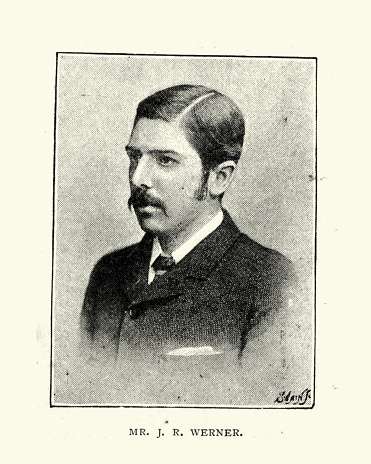
John Reinhardt Werner, an engineer in the late 1880’s is said to have encountered several massive crocodiles. Werner wrote that he had seen several considerably longer than the 42-foot steam ship on which he worked.
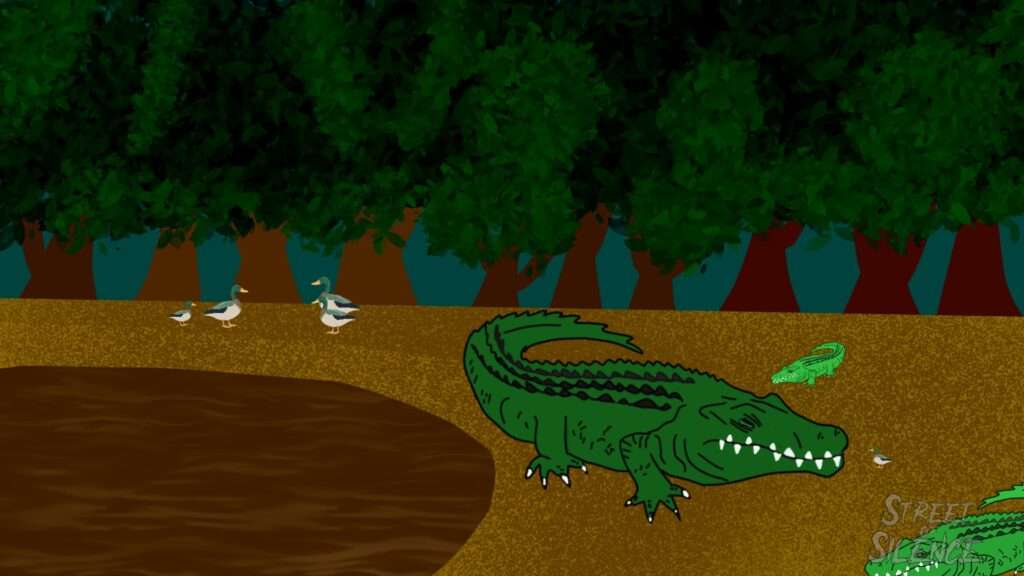
His first story concerns a time when Werner went duck hunting off the Congo River. As he scanned the beach, he would suddenly see a massive crocodile, which he estimated to be 50 feet long and 4 feet tall on the beach. It was resting, possibly sleeping and didn’t notice Werner. Wener sent a native boy to grab his rifle to grab his rifle as he said he only had a shotgun with him. The Ducks would fly away nearby and after some time, the ship needing food, Werner fired at the ducks. The massive croc woke up and swam quickly into the ocean.
Before moving to the next story, we should point out that it seems strange he chose a rifle over his shotgun. Shotguns are more powerful but less accurate than rifles. Why would someone bring a shotgun for duck hunting? Perhaps he brought the rifle as he was worried about hitting it though.
His second encounter occurred in 1888 while he was on the AIA 42-foot steamboat. He recalls how the AIA steamer got caught in shallow water. Initially he thought the steamer had hit a hippo, but he quickly realized that the water was only about 3 or 4 feet deep and no hippo was hiding under there. Then, as he looked overboard, he saw a massive crocodile, one over 40 feet. The crocodile then swam off quickly and disappeared into the deep water. He concluded the ship must have hit the crocodile, but he didn’t think it injured the animal in the slightest.
Roy P Mackal was a cryptozoology most famous for his work around the loch ness monster. He had heard from several natives about Mahamba although it’s not evident that he saw one in person.
The Congo River Basin
The Congo River Basin is one of the largest, most unexplored places on planet earth. Around 500 million acres this area is larger than the state of Alaska and is bustling with many unique species of animal and plant life. The area has a rivers, forests, savannas, swamps and flooded forest. Despite this, this area has been inhabited by humans for thousands of years and today around 75 million people reside there. This and the surrounding Congo Rainforest, the second largest rainforest in the world only behind the Amazon leaves much to imagination as far possible places a massive crocodile could be hiding. For example, The Congo River is world’s deepest river at 720 feet. It’s known for being pitch black as one goes deeper, and its known light can’t penetrate the bottom.
Evidence of Mahamba
Still, while as fascinating as these stories are and though of one, unfortunately there’s little to no evidence Mahamba does exist. Still, we should examine the arguments for and against something like this existing.
One argument against is simply that John Reinhardt Werner was fabricating these stories in order to sell his book. It’s completely plausible he blew the size of out of proportion.
Skeptics will point out that crocodiles are carnivorous animals, and it would be tough for them to find adequate food. This is a fair argument, but it could be the case that these massive crocs adapted to feast on smaller crocs, which are abundant in Africa.
One important point to consider is the habitat as well. The Congo River Basin is a mosaic of waterways and gives much opportunity for hiding. The surrounding area is too more populated than other remote places on earth.
One argument against the existence of the creatures is the body argument. Why hasn’t a body been found? Or a body part?
As crocodiles age, we know they can’t die from old age directly, but they lose their teeth and develop cataracts which indirectly kills them as they are unable to hunt as effectively. We know crocs spend most of their time in the water, so it could be the case these creatures die mostly in the water. This would explain the body argument.
100-foot Worm Spotted in the Amazon?
One other thing believer will say is that populations of these predators probably isn’t large if they do exist. These predators would need ample space in order to hunt and feed.
Theories on Mahamba
In terms of theories there are 3 as to what Mahamba is:
- Is that the animal doesn’t exist, or the crocodile size was blown out of proportion
- Is that this a new undiscovered crocodile, one much larger than the other ones existing today. It could also be something outside the crocodile family as well.
- The creature is a living dinosaur, something that didn’t go extinct and survived undetected.
While some believe Mahamba or a massive croc does exist, there surely needs to be more evidence of its existence. Even something like a footprint or body part could help the case. Until then, saltwater crocodiles will continue to hold the title as the biggest and baddest of the crocs.
Artrellia: The Legendary 30 foot of Dragon of Papua New Guinea
